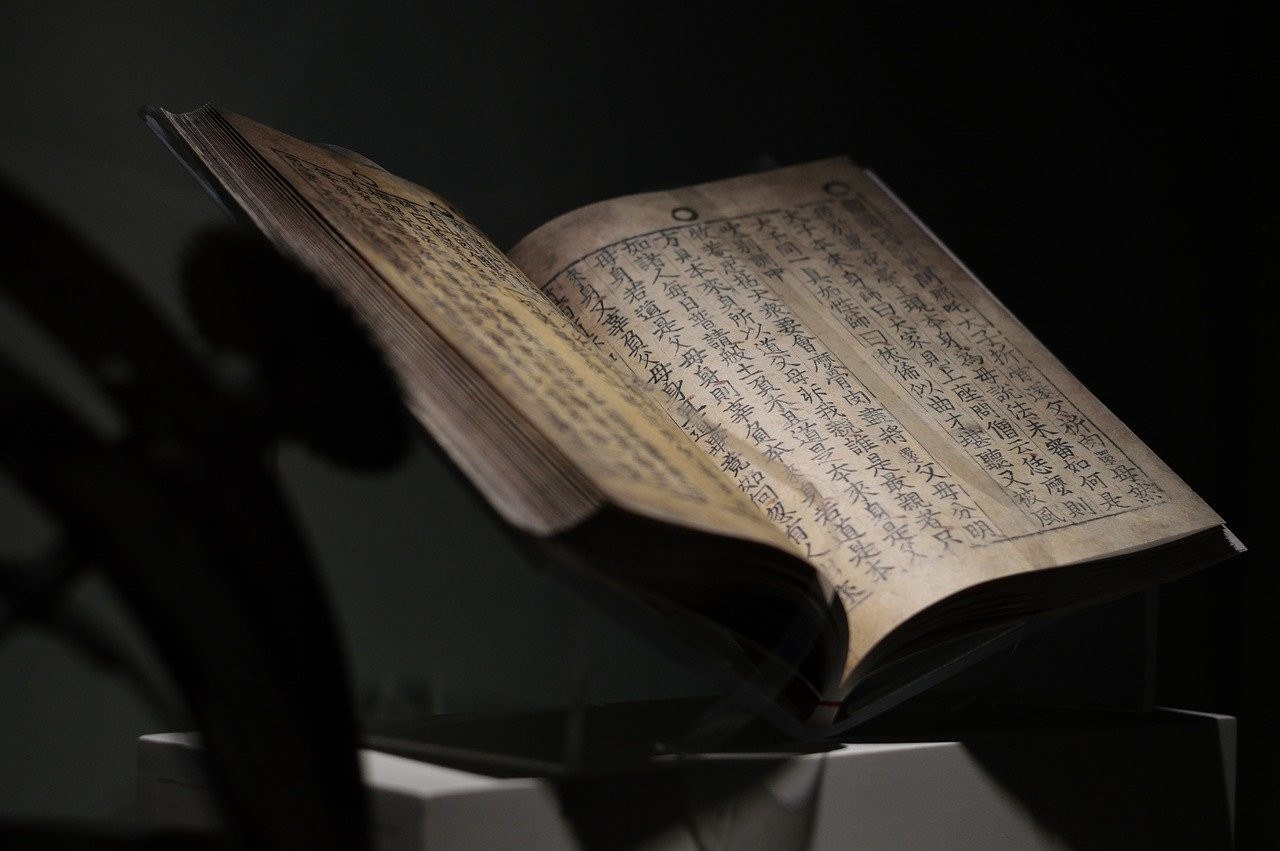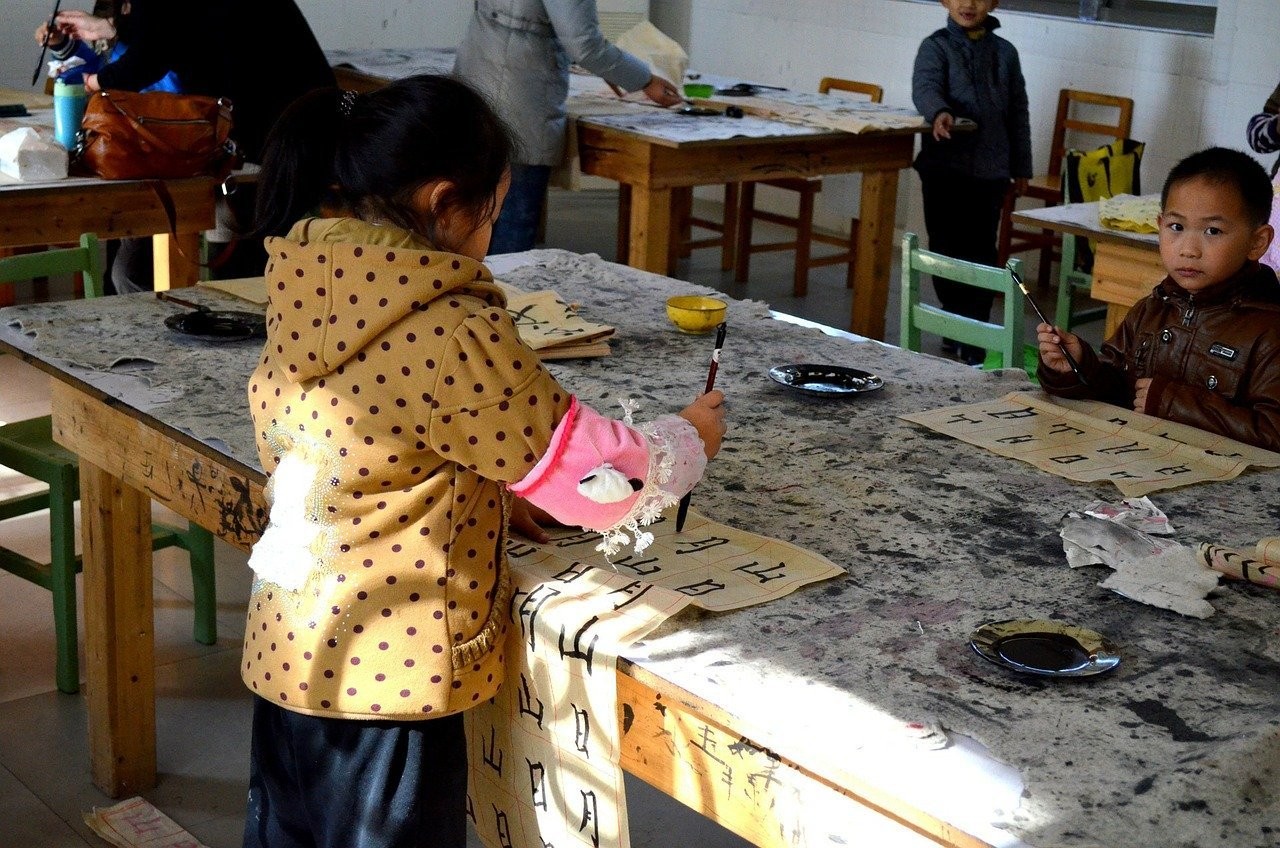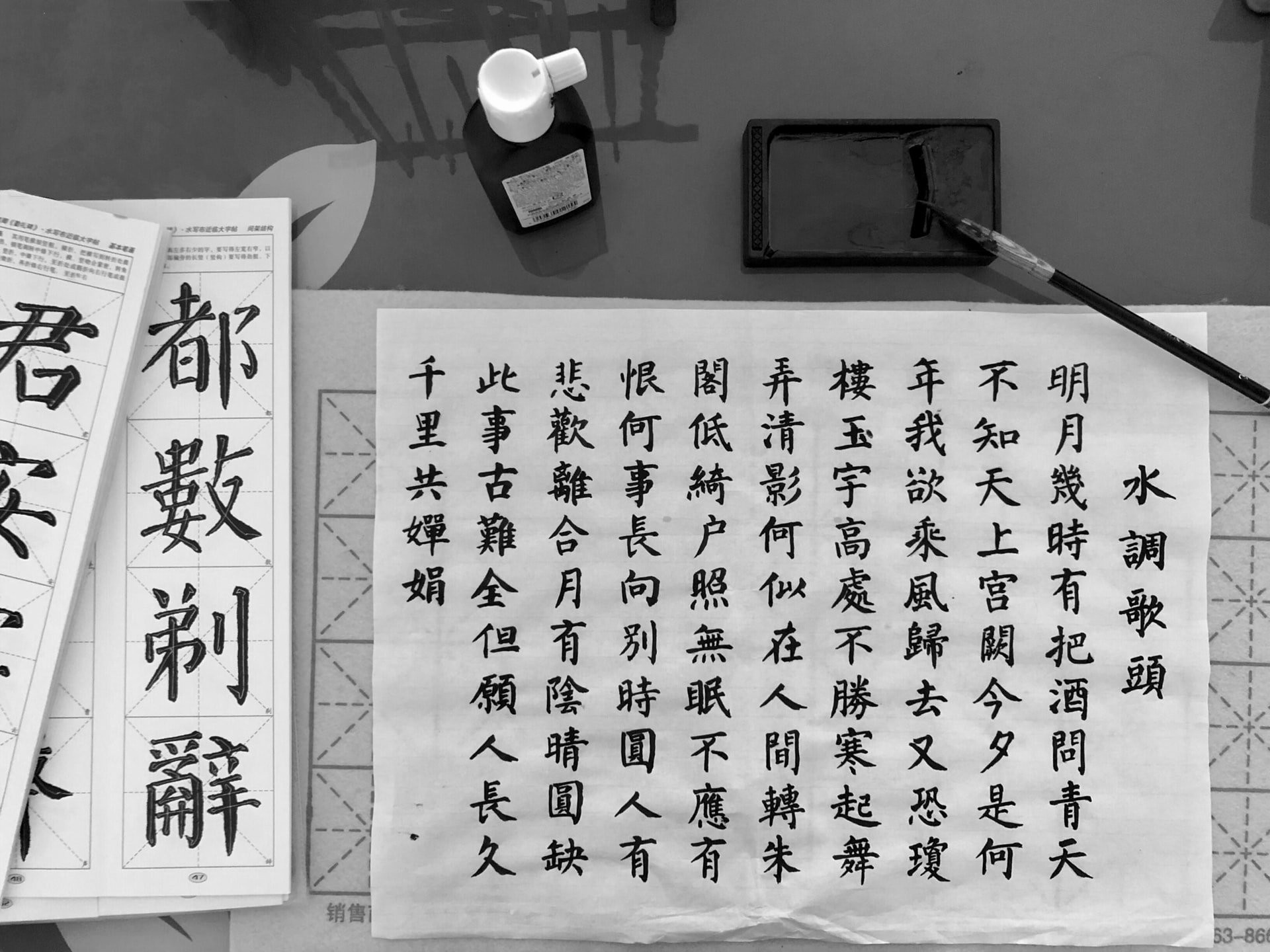Learning how to learn the Chinese alphabet, also known as Hanzi, can seem daunting, but it’s a rewarding journey into a rich and ancient culture. This guide will break down the process, offering effective strategies to master Chinese characters. At LEARNS.EDU.VN, we provide numerous resources to make your Chinese learning experience both enjoyable and successful, focusing on character recognition and practical application. Start mastering Mandarin Chinese characters today and unlock a world of opportunities with our easy-to-follow methods, vocabulary building tips, and comprehensive study guides.
1. What Are Chinese Characters And Why Learn Them?
Chinese characters, or Hanzi, are the writing system used in China. Instead of an alphabet, each character represents a word or a morpheme (a meaningful unit of language). Understanding Chinese characters is crucial for reading, writing, and comprehending the Chinese language and culture. They are the cornerstone of Chinese literacy.
1.1 The Unique Nature of Chinese Characters
Unlike alphabetic languages, where letters combine to form words, each Chinese character stands alone and conveys meaning. This system may seem complex, but it’s structured and logical. Recognizing the basic components and understanding how characters are formed makes learning manageable.
1.2 Historical Significance of Hanzi
The history of Chinese characters stretches back thousands of years. Originally pictographs, these symbols have evolved into stylized forms that retain traces of their origins. Knowing this history adds depth to your understanding and appreciation of the language. According to research by the Chinese Academy of Social Sciences, the earliest known Chinese characters date back over 3,000 years, showcasing the enduring legacy of this writing system.
1.3 Why Bother Learning Characters?
Some learners might wonder if they can get by with just Pinyin (the romanization system for Mandarin Chinese). While Pinyin is helpful for pronunciation, it doesn’t replace the need to learn characters. Without characters, understanding written Chinese becomes extremely difficult due to the high number of homophones (words with the same pronunciation but different meanings).
1.4 Overcoming the Apparent Difficulty
The perceived difficulty of learning Chinese characters often stems from the sheer number of characters. However, you don’t need to memorize tens of thousands of characters to achieve literacy. Knowing just a few thousand characters allows you to read most everyday texts. Focus on learning the most common characters first, and gradually expand your vocabulary.
2. A Brief History of the Chinese “Alphabet”
Understanding the evolution of Chinese characters provides valuable context for learners. The journey from simple pictographs to complex symbols is a fascinating one. Knowing the history helps you appreciate the structure and logic behind the characters.
2.1 From Pictographs to Modern Characters
The earliest Chinese characters were pictographs, direct representations of objects or concepts. Over time, these pictographs evolved into more abstract and stylized forms. Some characters still retain recognizable features of their original forms, while others have changed significantly.
2.2 The Development of More Complex Concepts
As Chinese society evolved, the need to express more complex ideas arose. Characters were combined to create new meanings. For example, combining the characters for “sun” (日) and “moon” (月) creates the character for “bright” (明). This method of combining characters is a testament to the ingenuity of the Chinese writing system.
2.3 The Role of Scribes and Scholars
Throughout history, scribes and scholars played a crucial role in standardizing and refining Chinese characters. They documented and preserved the writing system, ensuring its continuity and consistency. Their work has allowed us to study and learn Chinese characters today.
2.4 Impact of the Printing Press
The invention of the printing press had a profound impact on the dissemination of Chinese characters. It became easier and more affordable to produce books and other written materials, leading to increased literacy and a wider distribution of knowledge. According to research from Cambridge University Press, the printing press revolutionized the spread of Chinese literacy by making texts more accessible and affordable.
3. How Modern Chinese Characters Function
Modern Chinese characters function as a sophisticated system that combines meaning and sound. Understanding how these elements interact is essential for mastering the language. Let’s explore the key aspects of how characters work.
3.1 Meaning and Pronunciation
Each Chinese character has a specific meaning and pronunciation. While some characters have multiple meanings, the context usually clarifies the intended meaning. Similarly, some characters have multiple pronunciations, depending on the word they’re used in.
3.2 Radicals and Phonetic Components
Most Chinese characters are composed of two main parts: a radical and a phonetic component. The radical provides a clue to the meaning of the character, while the phonetic component suggests its pronunciation. Understanding these components can greatly aid in memorization and recognition.
3.3 The Importance of Context
Context is crucial for understanding the meaning of Chinese characters. A single character can have multiple meanings, and the surrounding words determine the intended meaning. Developing a strong sense of context is an essential skill for any Chinese learner.
3.4 Recognizing Patterns and Structures
Chinese characters follow certain patterns and structures. Recognizing these patterns can make it easier to learn new characters. For example, many characters related to water contain the water radical (氵). By identifying these patterns, you can accelerate your learning progress.
4. Understanding Chinese Radicals and Phonetic Elements
Chinese characters are not arbitrary collections of strokes; they are constructed using radicals and phonetic elements. Understanding these components is a powerful tool for learning and remembering characters.
4.1 What are Radicals?
Radicals are the building blocks of Chinese characters. They provide clues about the character’s meaning or category. There are 214 traditional radicals, and learning them is a crucial step in mastering Chinese characters.
4.2 How Radicals Help with Meaning
Radicals often indicate the semantic category of a character. For example, characters with the “water” radical (氵) are typically related to water or liquids. Recognizing the radical can give you a hint about the character’s meaning, even if you’ve never seen it before.
4.3 Phonetic Elements and Pronunciation
Phonetic elements provide clues about the pronunciation of a character. While the phonetic element doesn’t always indicate the exact pronunciation, it can give you a general idea of how the character is pronounced. This is especially helpful when learning new characters.
4.4 Using Radicals and Phonetic Elements to Memorize Characters
By breaking down characters into their radicals and phonetic elements, you can create mnemonic devices to help you remember them. For example, you might associate the “tree” radical (木) with the character for “forest” (森), which consists of three trees.
5. How Characters Combine to Form Chinese Words
While individual characters are important, most words in modern Chinese are composed of two or more characters. Understanding how characters combine to form words is essential for building your vocabulary and improving your comprehension.
5.1 Polysyllabic Words in Modern Chinese
Many modern Chinese words are polysyllabic, meaning they consist of multiple syllables. These words are formed by combining two or more characters, each contributing to the overall meaning.
5.2 Combining Characters to Create New Meanings
When characters combine to form words, the meaning of the word is often related to the meanings of the individual characters. For example, the word for “electricity” (电话) combines the characters for “telephone” (电) and “word” (话).
5.3 Examples of Common Character Combinations
Here are some examples of common character combinations and their meanings:
- 人 (rén) + 口 (kǒu) = 人口 (rénkǒu) – Population
- 大 (dà) + 学 (xué) = 大学 (dàxué) – University
- 工 (gōng) + 作 (zuò) = 工作 (gōngzuò) – Work
5.4 The Importance of Context in Word Formation
Context is crucial for understanding how characters combine to form words. The same characters can have different meanings depending on the context in which they are used. Paying attention to context is essential for accurate comprehension.
6. The Simplification of the Chinese “Alphabet” in the 1950s
In the 1950s, the Chinese government implemented a series of reforms to simplify Chinese characters. These reforms aimed to increase literacy rates and make the language more accessible. Understanding the history and impact of these reforms is important for any Chinese learner.
6.1 Why Character Simplification Was Undertaken
The main goal of character simplification was to reduce the number of strokes in commonly used characters, making them easier to write and learn. This was seen as a way to promote literacy and modernize the Chinese language.
6.2 Simplified vs. Traditional Characters
As a result of the simplification reforms, two sets of Chinese characters are now in use: simplified and traditional. Simplified characters are used in mainland China, while traditional characters are used in Taiwan, Hong Kong, and many overseas Chinese communities.
6.3 Examples of Simplified Characters
Here are some examples of simplified characters and their traditional counterparts:
| Simplified | Traditional | Pinyin | Meaning |
|---|---|---|---|
| 爱 | 愛 | ài | Love |
| 国 | 國 | guó | Country |
| 见 | 見 | jiàn | See |
| 语 | 語 | yǔ | Language |
| 东 | 東 | dōng | East |






6.4 Which Set of Characters Should You Learn?
The choice between learning simplified and traditional characters depends on your learning goals. If you plan to study or work in mainland China, simplified characters are the best choice. If you plan to study or work in Taiwan or Hong Kong, traditional characters may be more appropriate. However, knowing both sets of characters can be beneficial for a deeper understanding of the Chinese language and culture. At LEARNS.EDU.VN, we offer resources for learning both simplified and traditional characters, catering to your specific needs and goals.
7. How Chinese Children Learn To Write The Chinese Alphabet
Understanding how native speakers learn Chinese characters can provide valuable insights for foreign learners. Chinese children begin learning characters at a young age through a combination of memorization, repetition, and practical application.
7.1 Early Introduction to Characters
Chinese children are introduced to characters as early as preschool. They learn to recognize and write simple characters through picture books, flashcards, and other educational materials.
7.2 Emphasis on Repetition and Memorization
Repetition and memorization are key components of Chinese education. Children spend a significant amount of time copying characters to develop muscle memory and improve their writing skills.
7.3 The Role of Pinyin in Early Education
Pinyin plays a crucial role in early Chinese education. It helps children learn the pronunciation of characters and provides a bridge to reading and writing.
7.4 Practical Application and Contextual Learning
Chinese children learn characters in context, through reading stories, writing sentences, and engaging in practical activities. This helps them understand the meaning and usage of characters in real-world situations.
8. What is Pinyin?
Pinyin is the official romanization system for Mandarin Chinese. It uses the Latin alphabet to represent the sounds of Chinese characters. Pinyin is an essential tool for learning pronunciation and for inputting Chinese characters on computers and mobile devices.
8.1 The Purpose of Pinyin
The main purpose of Pinyin is to provide a phonetic representation of Chinese characters. This allows learners to pronounce characters correctly and to transcribe Chinese words using the Latin alphabet.
8.2 The Components of Pinyin
Pinyin consists of initials, finals, and tones. Initials are consonants that begin a syllable, while finals are vowels or combinations of vowels and consonants that end a syllable. Tones indicate the pitch of a syllable and are crucial for distinguishing different meanings.
8.3 The Four Tones of Mandarin Chinese
Mandarin Chinese has four main tones, plus a neutral tone. The tones are:
- First tone: High and level (ā)
- Second tone: Rising (á)
- Third tone: Falling-rising (ǎ)
- Fourth tone: Falling (à)
- Neutral tone: Short and light (a)
8.4 How Pinyin Aids Learning
Pinyin helps learners pronounce characters correctly, build their vocabulary, and improve their listening comprehension. It also provides a foundation for learning to read and write Chinese characters.
9. Effective Strategies for Learning Chinese Characters
Learning Chinese characters can be challenging, but with the right strategies, it can also be rewarding. Here are some effective methods for mastering Chinese characters:
9.1 Start with the Most Common Characters
Focus on learning the most frequently used characters first. This will allow you to read a wider range of texts and build a solid foundation for further learning. According to research from the University of Leeds, mastering the 500 most common characters can enable you to understand about 80% of written Chinese.
9.2 Use Flashcards and Spaced Repetition
Flashcards are a great way to memorize characters and their meanings. Use spaced repetition software like Anki to optimize your learning and reinforce your memory.
9.3 Break Down Characters into Components
As discussed earlier, understanding the radicals and phonetic elements of characters can greatly aid in memorization. Break down characters into their components and create mnemonic devices to help you remember them.
9.4 Practice Writing Characters Regularly
Writing characters regularly is essential for developing muscle memory and improving your writing skills. Use a calligraphy brush or a pen to practice writing characters on grid paper.
9.5 Read Extensively in Chinese
Reading extensively in Chinese is a great way to reinforce your knowledge of characters and learn new ones in context. Start with simple texts and gradually work your way up to more complex materials.
9.6 Use Technology and Online Resources
There are many excellent apps and websites that can help you learn Chinese characters. Explore different resources and find the ones that work best for you. At LEARNS.EDU.VN, we offer a variety of online tools and resources to support your Chinese learning journey.
9.7 Immerse Yourself in the Language
Immerse yourself in the Chinese language as much as possible. Watch Chinese movies and TV shows, listen to Chinese music, and try to communicate with native speakers. This will help you develop a deeper understanding of the language and culture.
10. Is Learning Chinese Characters Absolutely Necessary?
While it’s possible to learn some basic Chinese phrases using only Pinyin, mastering Chinese characters is essential for true fluency and literacy. Here’s why:
10.1 The Limitations of Pinyin-Only Learning
Relying solely on Pinyin limits your ability to read and write Chinese. You’ll be unable to access the vast wealth of Chinese literature, news, and online content.
10.2 The Problem of Homophones
As mentioned earlier, Chinese has many homophones, words that sound the same but have different meanings. Without characters, it can be difficult to distinguish between these words.
10.3 Cultural Understanding
Learning Chinese characters provides insights into Chinese culture and history. Each character has a story to tell, and understanding these stories enriches your appreciation of the language.
10.4 Professional Opportunities
In today’s globalized world, knowing Chinese can open up many professional opportunities. However, most employers require proficiency in both spoken and written Chinese.
10.5 Enhancing Communication
While speaking Chinese is important, being able to read and write allows you to communicate with a wider range of people. You can send emails, write letters, and participate in online forums.
11. FAQs About The Chinese Alphabet
Here are some frequently asked questions about the Chinese alphabet:
11.1 Is there a Chinese alphabet A to Z?
No, Chinese doesn’t have an alphabet that goes from A to Z. Instead, it uses logographic characters, where each character represents a word or part of a word. Mandarin Chinese does have a system called Pinyin, which uses the Latin alphabet to help with pronunciation, but it doesn’t replace characters in writing.
11.2 How many letters are in the Chinese alphabet?
Chinese doesn’t have an alphabet with letters like in English. Instead, it uses characters, each representing a syllable or word. There are thousands of unique Chinese characters, but to be literate in modern Chinese, a person typically needs to know about 2,500 to 3,500 characters.
11.3 What is the letter J in Chinese?
Chinese doesn’t have direct equivalents for letters like “J” since it uses characters rather than an alphabet. However, in Pinyin (the system for transcribing Chinese sounds using the Latin alphabet), “J” represents a sound similar to the English “j” as in “jeep.” The sound “J” in Pinyin often appears in words like “ji” (鸡, meaning “chicken”) and “jia” (家, meaning “home” or “family”).
11.4 What is the letter H in Chinese?
Chinese doesn’t have an alphabet with individual letters like “H,” but in Pinyin (the phonetic system using Latin letters for pronunciation), “H” represents a breathy sound similar to the English “h” as in “hello.” It’s often used in words like “hao” (好, meaning “good”) and “he” (喝, meaning “to drink”).
11.5 How long does it take to learn the Chinese alphabet?
There’s no set time, as it varies based on individual factors like learning style, dedication, and resources used. However, with consistent effort and the right tools, you can make significant progress in a few months.
11.6 What are the best resources for learning the Chinese alphabet?
Numerous resources are available, including textbooks, online courses, language exchange partners, and mobile apps. LEARNS.EDU.VN offers comprehensive materials and personalized guidance to suit your learning preferences.
11.7 Do I need to learn all the Chinese characters?
No, you don’t need to learn every single Chinese character to achieve fluency. Focusing on the most commonly used characters will enable you to understand a large percentage of written Chinese.
11.8 Can I learn the Chinese alphabet on my own?
Yes, you can learn the Chinese alphabet on your own, but it requires discipline and self-motivation. Using structured resources and seeking feedback from native speakers can greatly enhance your learning experience.
11.9 What is the difference between simplified and traditional Chinese characters?
Simplified Chinese characters are a set of standardized characters used in mainland China, while traditional Chinese characters are used in Taiwan, Hong Kong, and Macau. Simplified characters have fewer strokes, making them easier to write.
11.10 Which version of Chinese characters should I learn?
The choice between simplified and traditional Chinese characters depends on your learning goals and where you plan to use the language. If you plan to study or work in mainland China, simplified characters are recommended. If you plan to study or work in Taiwan or Hong Kong, traditional characters may be more appropriate.
12. Take The First Step In Mastering Chinese Characters
Learning Chinese characters is a challenging but rewarding journey. By understanding the structure and history of characters, using effective learning strategies, and immersing yourself in the language, you can unlock the doors to a rich and fascinating culture. Remember, every journey begins with a single step. Start learning Chinese characters today and discover the beauty and depth of the Chinese language.
12.1 Embrace the Challenge
Learning Chinese characters requires patience, dedication, and a willingness to embrace the challenge. Don’t be discouraged by the complexity of the writing system. With consistent effort, you can make significant progress.
12.2 Set Realistic Goals
Set realistic goals for your learning journey. Don’t try to learn too many characters at once. Focus on mastering a few characters each day and gradually expand your vocabulary.
12.3 Celebrate Your Progress
Celebrate your progress along the way. Acknowledge your achievements and reward yourself for your hard work. This will help you stay motivated and maintain a positive attitude.
12.4 Seek Support and Guidance
Don’t be afraid to seek support and guidance from teachers, tutors, or language exchange partners. Learning with others can make the process more enjoyable and effective.
12.5 Explore the World of Chinese Culture
Learning Chinese characters opens up a world of cultural experiences. Explore Chinese literature, art, music, and cuisine to deepen your understanding and appreciation of the language.
Ready to start your journey to mastering Chinese characters? LEARNS.EDU.VN offers a wealth of resources to support you every step of the way. From comprehensive courses and personalized tutoring to interactive exercises and cultural insights, we provide everything you need to succeed.
Visit LEARNS.EDU.VN today and discover the joy of learning Chinese! Contact us at 123 Education Way, Learnville, CA 90210, United States. Call us at Whatsapp: +1 555-555-1212. Let us help you unlock the doors to a world of opportunity and connect with a vibrant global community. At learns.edu.vn, we believe that learning is a lifelong adventure, and we are here to guide you on your path to success.

